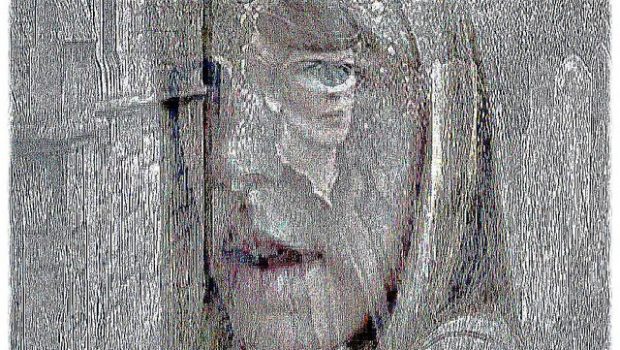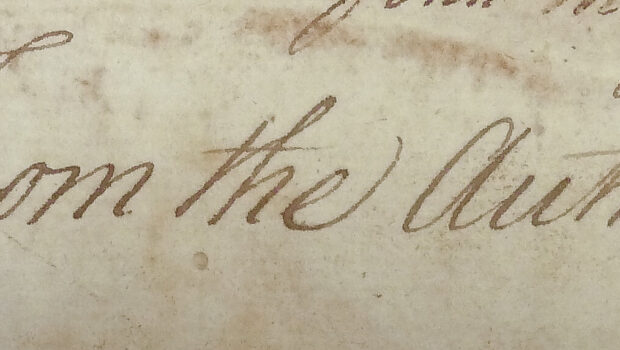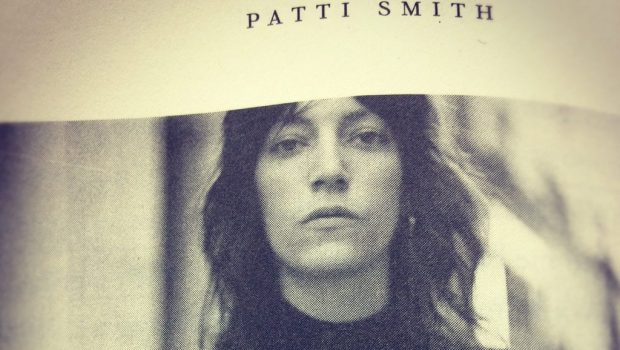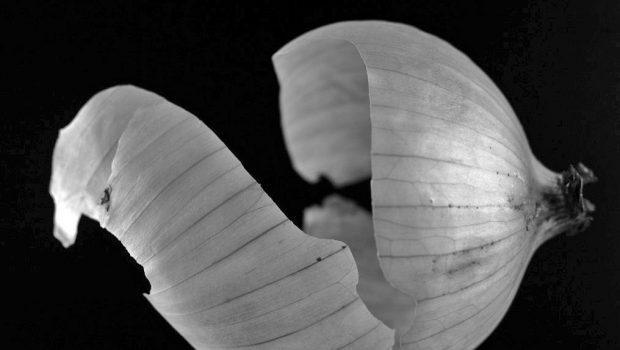The Truth about Spain: American Hispanism, the Spanish Civil War, and the Crisis of Academic Legitimacy
Sebastiaan Faber
Almost from the moment of its outbreak in July 1936, the Spanish Civil War sparked intense public controversy in many different countries, not least in the United States. For some, the embattled Republican government represented the last bastion of democracy against fascism on the march. For others, the military rebels led by Franco were Christian crusaders fighting godless Communism. Throughout the three years that the war raged on, intellectuals, politicians, religious leaders, and activists in Europe and the Americas violently disputed each other’s versions of the “truth about Spain.”
Seventy years later, surprisingly little has changed. The disagreements over what really happened between 1936 and 1939 seem just as intense, and just as intractable, as during the war itself. In March 2007, the opening in New York of an exhibit showing how the Civil War was experienced and perceived by the city and its inhabitants—about a thousand of whom joined the Republican army as international volunteers—gave rise to some testy exchanges among scholars, journalists, and veterans’ relatives. Recent work by American, British, and Spanish historians of the Civil War has come in for sharp criticism and praise from academic colleagues. And in Spain itself, the anniversary year of 2006 has helped revive or intensify decades-long disagreements that show no signs of abating. The Spanish disputes are particularly significant because conflicting interpretations of the war are directly linked to the much wider debate about the legacy of Francoism—a debate that was skirted in the country’s transition to democracy in the late 1970s, but that has now come back to haunt it with a vengeance.
In all three of these recent polemics, the dissenting parties tend to accuse each other of political bias while claiming for themselves a position of sober objectivity. In practice, no one is willing to give the opposite side an inch. This, too, has been a general pattern in seven decades’ worth of discussions about the topic. It seems that too many groups and individuals have too much invested, personally or politically, in particular versions of the Spanish war. The result is a continuous, tiresome—and ultimately erosive—stalemate. Since the mutual charges of political bias have proven utterly unproductive, it might be time to rethink the implicit assumption that the Civil War can or should be approached from an “objective” or “neutral” position. Perhaps the never-ending debates over the Spanish war even provide a useful starting point for a more general reflection on the role of affective and political investments when it comes to establishing a consensus about historical truth. This is not a new issue, of course. But I would argue that it is closely related to a pressing problem in our current, media-saturated world: the waning legitimacy of scholarship and journalism, two discourses that ground their institutional authority in particular notions of rigor and objectivity.
It is well known that events in Spain between 1936 and 1939 mesmerized large sections of the American and European public. For Western intellectuals, in particular, the Spanish Civil War quickly turned into a moral test case: given what was at stake, many thought, it was impossible not to take sides. And many intellectuals, activists, religious or civic leaders indeed took a public position on the war—although it is safe to say that most of them were not, by any measure, experts of things Spanish.
But what impact did the outbreak of the war have on those who did know Spain? What was the reaction from foreign scholars of Spanish language, literature, culture, and history? The available evidence suggests that their reactions varied widely. Some joined the fierce public debate on the war. This was the case of Professor Allison Peers, one of Britain’s most prominent Hispanists, who published a large number of books and articles on the topic, in which he tended to favor the Franco side. In the United States, however, only a handful of Hispanists decided to speak out publicly on the war. The large majority of Spanish teachers and professors, including the field’s institutional leadership, were extremely hesitant to comment on contemporary Peninsular politics. In December 1936, the edi- tor of Hispania, the journal of the American Associated of Teachers of Spanish, wrote that he had received a large amount of letters and articles about the war, but that he thought it best not to publish anything on the topic that could be “considered as biased”. Other journals adopted a similar attitude. In practice, American Hispanists all but ignored the war in their professional journals and meetings. (Hispania would publish nothing of consequence on the subject for decades.)
Why were American scholars of Spain so reluctant to join the debate on a topic so close to their professional and personal interests? For one, they felt that, as academic experts of language, literature and culture, they had no business commenting on politics. More important, they feared that any association with controversial issues of the day would have a disastrous effect on the public image and legitimacy of their profession. This, at least, was the argument made by the prominent Hispanist Henry Grattan Doyle. “We must all ‘watch our step,’” he wrote in late 1939; “The future of our subjects is largely in our own hands.” To be sure, Doyle wrote, faculty serve as “interpreters of the culture” of the nations whose language they teach. But “that does not mean that we should let ourselves become in the slightest degree political apologists or—worse still—conscious or unconscious propaganda agents for any foreign nation” (93): “Even if the Spanish struggle had presented a clear-cut issue of dictatorship versus democracy, it would have been important to follow the dictates of good sense and keep the teaching of Spanish free from confusion with the political claims of one side or the other in the minds of our fellow-citizens” (95). Ironically, then, it was exactly when a large number of public figures in the United States joined the intense public discussion on the situation in Spain that the topic became something of a taboo for the academic experts on the country.
Things today, of course, have changed. American Hispanists are no longer afraid to address the Spanish Civil War in their classes. In fact, for Iberian Studies the war has become a central topic, particularly attractive from a cultural-studies standpoint. After all, few episodes in twentieth-century Spain present such an intricate combination of politics and high- and low-cultural forms, or so many opportunities for interdisciplinary, transnational, and transcultural research. The large majority of American Hispanists who work on the Civil War, moreover, make little attempt at political neutrality; almost as a matter of course, most assume some level of solidarity with the Republic. It is with this solidarity, however, that some conservative American scholars and intellectuals take issue. Hence the continued controversy around the Spanish Civil War in the American public sphere. The turmoil around the New York exhibit proves this point once more.
“Facing Fascism: New York and the Spanish Civil War” opened on March 23, 2007, organized by the Museum of the City of New York together with the Instituto Cervantes, NYU’s Tamiment Library, and the Abraham Lincoln Brigade Archives. (Disclosure: I sit on ALBA’s board of governors.) The exhibit and an accompanying collection of essays aim to illustrate the city’s multiple reactions to the outbreak of violence in Spain. Even before the show opened, however, it drew sharp criticism. On March 22, the New York Sun published a scathing review in which Ronald Radosh, emeritus professor of history at CUNY, accused the curators of presenting an outdated, romanticized, and politically disingenuous version of the war. Radosh was particularly dismissive of the way the exhibit described the role played by the American volunteers in Spain. For him, the exhibit’s “evident purpose is further glamorizing and distorting the record with a biased account of the issues,” an account that represents “the events of the 1930s as a simple morality play of good guys versus bad guys.” While the exhibit claims that the New Yorkers who joined the Civil War went to defend democracy against fascism—Radosh writes—in reality the international volunteer fighters “were a Comintern- directed army,” meant to help Stalin achieve his goal of establishing a Soviet-style “people’s republic” on the Iberian Peninsula. “[T]he fairy tales of the old left,” Radosh concludes, “once again take hold as the tenured radicals of academia advance their campaign to resurrect myths with a public exhibit.” The New York Times soon followed with a similarly skeptical piece. “[T]his show deviates little from what would have once been called the party line,” reviewer Edward Rothstein noted; “The real situation is far more complicated than anything suggested here.”
The reviews sparked a series of critical responses. “Professor Radosh’s attack on this book and exhibition seems unfortunate, unfair, and misplaced,” wrote James Fernández, professor of Spanish at NYU and coeditor of the book accompanying the exhibit. According to Fernández it is Radosh who presents a simplifi- ed, tendentious reading of the war, partially based on falsehoods and distortion. The exhibit and the book, by contrast, “aim precisely to reaffirm complexity and to challenge received ideas, to abandon simplistic paradigms.” Jim Skillman, an Atlanta-based activist associated with the ALBA, sent a parodic letter to the Sun in which he applied for a reviewer’s position: “I have recently been made aware that actually attending the events and exhibitions I would write about is not a requirement, and that it is only necessary for my submissions to reflect your right-wing reactionary neocon- political line”. Dan Watt, in turn, son of Lincoln Brigader George Watt, wrote to the Times stating that its review was “blatantly unfair to the men and women of the Lincoln Brigade who risked their lives to fight for the democratically-elected Spanish government.”
As this exchange shows, most of the Civil-War polemics in the American public sphere center on the role of Communism and the Soviet Union in the 1930s and after. The same can be said of recent discussions among professional historians; and here, too, the tone has become unusually sharp. In a review essay for the Journal of Contemporary History, the British historian Chris Ealham dismissed the two latest books by Stanley Payne—with Gabriel Jackson one of the two most prominent American experts of Spanish Civil War history—as politically motivated distortions of the historical record: a “simplistic… narrative of leftist misdeeds.” “Payne’s all-consuming desire to attack the ‘twisted logic of the left,’” Ealham writes, “means that he can sustain his central argument only by systematically omitting conflicting material and/or by adopting outlandish views.” Payne himself, meanwhile, has been equally dismissive of fellow historians more sympathetic to the Republic, denouncing what he sees as the predominance of leftist views among Spanish academic historians and, more generally, a stifling regime of political correctness.
In Spain, the disagreement is less sharp among academic historians than between academic historians and intellectuals writing about recent Spanish history for a larger, lay audience. Particularly notorious in this respect has been Pío Moa, whose Los mitos de la guerra civil (2004) became a bestseller. While Moa claims to present new and revealing facts about the responsibility of the Spanish left for the outbreak of the war— the origin of which he places in the general strike of 1934—the academic establishment dismisses his work as a tendentious and unrigorous recycling of Francoist interpretations that have long been discredited by meticulous research. Still, the academic historians are at a loss to explain Moa’s tremendous popularity, and are not quite sure if and how to counteract what they see as a campaign of misinformation.
It seems, then, that the tensions between politics and academic rigor remain as unresolved as they were in the 1930s. This is not only true for Spain but also for the United States, where conservative intellectuals have been complaining about the “liberal bias” of the American university, especially in the Humanities and Social Sciences. Publicists like David Horowitz—something of an American Moa—have decried what they see as the overwhelming presence, at universities and colleges all over the country, of left-leaning scholars who place political advocacy above the disinterested pursuit of truth. Horowitz claims to fight for “intellectual diversity,” and invokes notions of propriety, professional conduct, and scholarly norms. Professors, he says, should strictly limit the subject matter discussed in their classes to the area of their scholarly expertise and the topic of the course; politics have no place in a literature course. Moreover, when addressing controversial issues within their scholarly field, teachers should be sure to separate fact from opinion, present more than one viewpoint, and not privilege their own position. Stanley Fish has similarly urged his fellow academics not to “confuse your academic obligations with the obligation to save the world” and not to “cross the boundary between academic work and partisan advocacy.” For Fish, “the true task of academic work” is “the search for truth and the dissemination of it through teaching”: “our job is not to change the world, but to interpret it.” Curiously, Fish and Horowitz thus end up proposing something similar to Henry Doyle in 1939: professorial neutrality and self-restraint, based on a sharp distinction between “the search for truth,” on the one hand, and “politics” or “advocacy” on the other. As we have seen, this distinction is not really helpful when it comes to resolving the Spanish Civil War debates, in which the distinction tends to serve as little more than a rhetorical strategy to reject opponents’ arguments out of hand.
In Spain, the tension between scholarly expertise and control of the public sphere has been particularly vexing. The tremendous commercial success of “revisionists” like Pío Moa has in part been possible because they fill a void. The successive governments of post-Franco Spain never dared establish anything resembling a national consensus on the historical narrative of the Civil War and Francoism. While there is some degree of consensus among mainstream scholars of Spanish history, nothing of the kind exists among the population at large, many of whom were barely taught about the 1930s in school. It is often said that Spain’s transition was based on a collective form of amnesia. This is not entirely true: much has been written and published in post-Franco Spain about the 1930s. Given the particular dynamics of the country’s transition to democracy, however, most of these writings were never allowed to gel into any coherent general picture that could serve as the basis of, for instance, secondary-school textbooks.
To make matters worse, all parties involved like to link points of historical interpretation directly to the fraught political present, which is entirely dominated by the rivalry between the ruling Socialist Party (PSOE) and the oppositional Partido Popular (PP). The populares accuse the current Prime Minister, José Luis Rodríguez Zapatero, of pursuing a “radical” agenda that threatens Spanish peace and territorial integrity. For the socialistas, in turn, important sections of the PP still represent an atavistic, authoritarian conservatism that is out of step with the European right and maintains dangerous connections with neo-Francoist currents. Moreover, the three main points of conflict between the PP and the PSOE are directly related to the legacy of Francoism or can be construed as repeats of the ideological struggles of the 1930s: the Socialists’ push for social liberalization and secularization (legalization of gay marriage, stricter enforcement of church-state separation); its willingness to negotiate about increased regional autonomy, and its consequent openness toward peace talks with ETA; and its wish to revisit or even redress Spain’s transition to democracy, allowing for a more explicit condemnation of the Franco regime and for state-sponsored forms of recognition of its many victims. By now the rivalry between the PP and PSOE has led to a serious breakdown of public discourse, as the Spanish media has become almost completely politicized along party lines.
Drawn into this political maelstrom, journalism and academic discourse have a hard time holding their own. Their traditional claims to truth, based on a strict adherence to strict norms of rigor and objectivity, are constantly being questioned and undermined. The confused reactions from established historians in the face of Pío Moa’s popularity illustrate this dilemma well. What do you do when badly researched lies receive a much wider coverage than what you know to be the scholarly truth? Historians’ responses have varied: some have chosen to ignore Moa altogether; others have tried to refute his theses. Julián Casanova, one of the most prominent of Spanish historians, has chosen to delegitimize “pseudo-historians” like Moa by invoking the institutional authority of “professional historians, … who fuel new research and take their teachings to classrooms and scholarly conferences.” Casanova’s appeal to institutional power is a weak defense, though, in part because it implies a blanket disqualification of amateurs. Spanish Civil War historiography would not be what it is today without the contribution of aficionados like Gerald Brenan, Hugh Thomas, or Herbert Southworth, a Texas-born librarian for whom the war would become a life-long obsession.
The work of Southworth, in fact, might point to a way out of the politics-versus-truth dilemma. Southworth (1908-1999) spent most of his life in search of the “truth about Spain,” meticulously demolishing the myths that in Franco’s Spain passed for official Civil War historiography. Southworth was a rigorous historian if there ever was one, yet he was also an amateur, a Hispanophile, and deeply committed to the cause of the Republic. His work shows that rigor and political commitment do not only not exclude each other, but that their combination can be mutually reinforcing. The energy needed for Southworth’s decades-long search for the truth is provided by his political outrage over the Republic’s defeat. For Southworth, moreover, rigor— an unconditional commitment to truth and scholarly integrity—is not the same as neutrality or impartiality. “Perhaps,” he wrote in 1963, “‘impartial’ students of a conflict cannot elude the normal tendency to accuse and defend each side in equal measure, dividing up the responsibility and war crimes in two equal parts and give one to each side.” But “this implies an erroneous vision of the Republican camp, which doubtlessly had the law and justice on its side” (146). The truth, in short, is never neutral.
Posted: April 9, 2012 at 4:15 am










